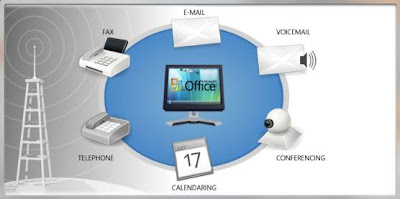 Microsoft Corp. executives and partners will launch the next wave of unified communications software on Tuesday, Oct. 16, 2007, 9:15 a.m. PDT (12:15 p.m. EDT), which will rapidly advance and improve the way people communicate and collaborate.
Microsoft Corp. executives and partners will launch the next wave of unified communications software on Tuesday, Oct. 16, 2007, 9:15 a.m. PDT (12:15 p.m. EDT), which will rapidly advance and improve the way people communicate and collaborate.Microsoft unified communications technologies offer customers choices in how their communications and collaboration software is delivered, managed, and maintained.
Microsoft unified communications technologies bridge the divide between computers and telephones with two integrated servers: Microsoft Exchange Server 2007 and Microsoft Office Communications Server 2007. They integrate with your company's existing phone system and deliver complete communications services using your existing data network.
No forklift required: Microsoft unified communications technologies maximize your existing infrastructure by integrating legacy PBX systems through a VoIP/PBX gateway.
With Microsoft unified communications technologies, the computers on your network gain the functionality of advanced VoIP phones. Users can click to call any contact in their address book. A simple phone call can become a conference call or a video conference, on the fly.
Microsoft unified communications technologies tear down the walls that separate tele-communications and computing. And they do it with software that leverages your existing telecommunications infrastructure.
 Microsoft unified communications technologies are more than just VoIP. They break down all the traditional communications silos. Voice-mail and faxes move over the network like e-mail. They arrive in your Microsoft Office Outlook 2007 inbox where you can sort, prioritize, and forward them, just like any piece of e-mail.
Microsoft unified communications technologies are more than just VoIP. They break down all the traditional communications silos. Voice-mail and faxes move over the network like e-mail. They arrive in your Microsoft Office Outlook 2007 inbox where you can sort, prioritize, and forward them, just like any piece of e-mail.And when you're on the road, you can dial in over any telephone to hear your e-mails and your calendars. You can even access your Microsoft Office Outlook directory and place calls from any telephone.
Click for Technical Resources.

No comments:
Post a Comment